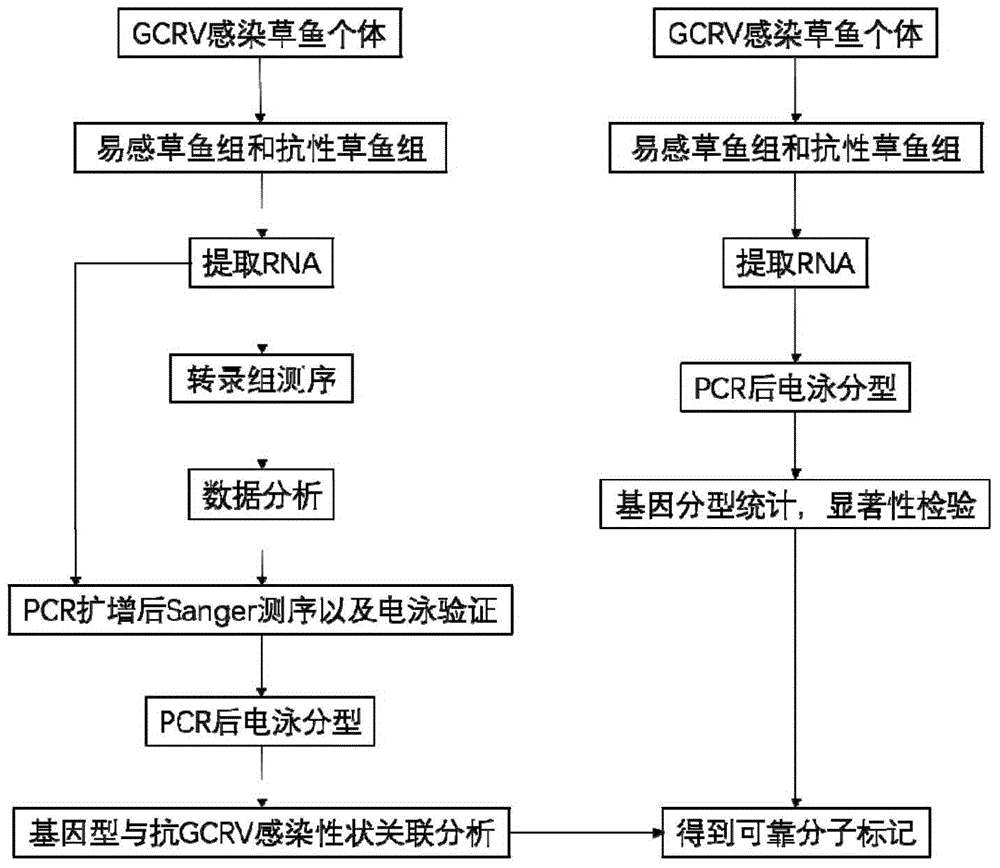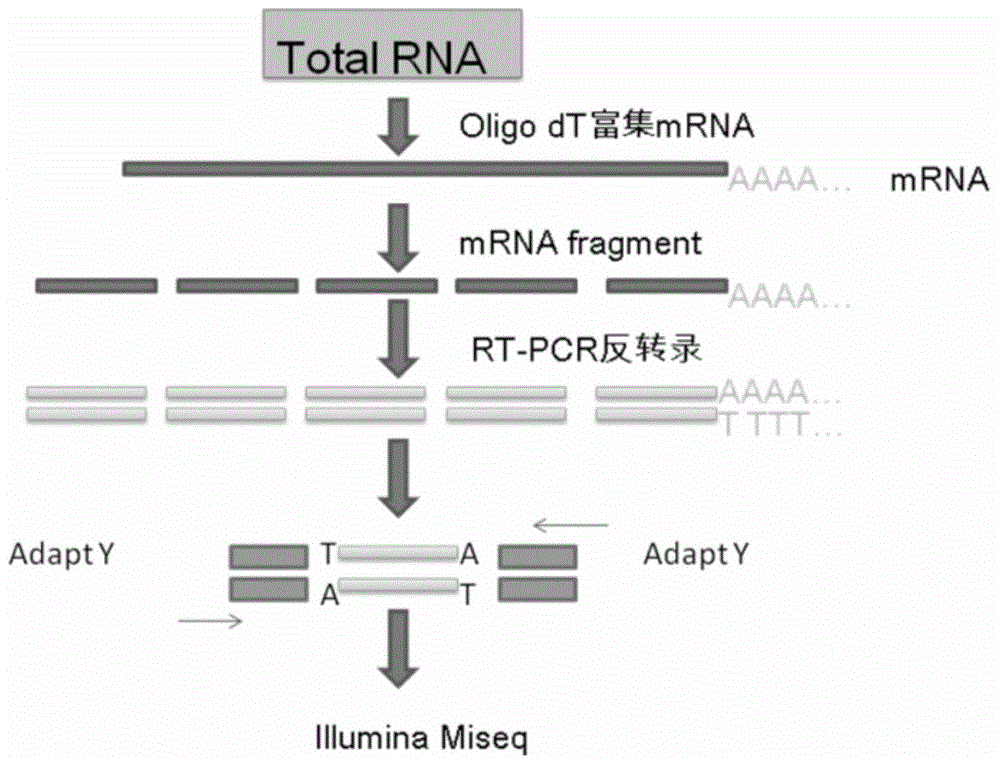Molecular marker for hemorrhagic disease resistance trait of grass carp and application of molecular marker
An anti-bleeding disease and molecular marker technology, which is applied in the fields of application, microbial measurement/inspection, biochemical equipment and methods, etc., can solve the problems of time-consuming and labor-consuming, and achieve accurate detection, high throughput and fast speed Effect
- Summary
- Abstract
- Description
- Claims
- Application Information
AI Technical Summary
Problems solved by technology
Method used
Image
Examples
Embodiment 1
[0043] Example 1: Grass carp transcriptome sequencing
[0044] (1) Infection test
[0045] The aquarium required for the test was soaked in 0.05% potassium permanganate solution for 24 hours, cleaned, filled with clean water, installed the oxygenation pump and heating rod, adjusted the temperature to 28°C-30°C, and turned on the oxygenation pump. Temporary breeding of experimental fish. Before the GCRV virus infection, the grass carp were randomly divided into five groups (60 fish / group) and temporarily raised in the prepared aquarium, and the palatable pellet feed was fed twice a day at a fixed point, time, and quantity, and the residual bait and metabolic waste were cleaned up in time . For about a week, prepare for the virus infection test after the daily physiological activities of the fish school are normal and the vitality is active. Grasscarp reovirus (GCRV-097) stock solution was donated by Institute of Hydrobiology, Chinese Academy of Sciences. The virus suspensio...
Embodiment 2
[0064] Example 2: RIG-I gene transcript verification and association analysis
[0065] (1) DNA extraction of grass carp spleen and head kidney tissue
[0066] Genomic DNA was extracted by the chloroform method. The specific operation steps are as follows:
[0067] 1) Take 0.05g of tissue (mung bean size) and put it in a 1.5mLEP tube, add 200μL of tissue extract, and grind it thoroughly. Add 400 μL of tissue extract and 60 μL of 1 mg / mL proteinase K, put in a 55°C water bath (for about 3 hours) or overnight at 37°C, and digest until the liquid is clear;
[0068] 2) Add 600 μL Tris-saturated phenol, mix thoroughly for 10 minutes, and centrifuge at 12,000 rpm for 10 minutes;
[0069] 3) Transfer the supernatant to a new EP tube, add 500 μL chloroform for extraction, mix thoroughly for 10 minutes, and centrifuge at 12,000 rpm for 10 minutes;
[0070] 4) Pipette the supernatant into a new EP tube, add 2 times the volume of ice ethanol (-20°C), precipitate DNA at -20°C for at le...
PUM
 Login to View More
Login to View More Abstract
Description
Claims
Application Information
 Login to View More
Login to View More - R&D
- Intellectual Property
- Life Sciences
- Materials
- Tech Scout
- Unparalleled Data Quality
- Higher Quality Content
- 60% Fewer Hallucinations
Browse by: Latest US Patents, China's latest patents, Technical Efficacy Thesaurus, Application Domain, Technology Topic, Popular Technical Reports.
© 2025 PatSnap. All rights reserved.Legal|Privacy policy|Modern Slavery Act Transparency Statement|Sitemap|About US| Contact US: help@patsnap.com



